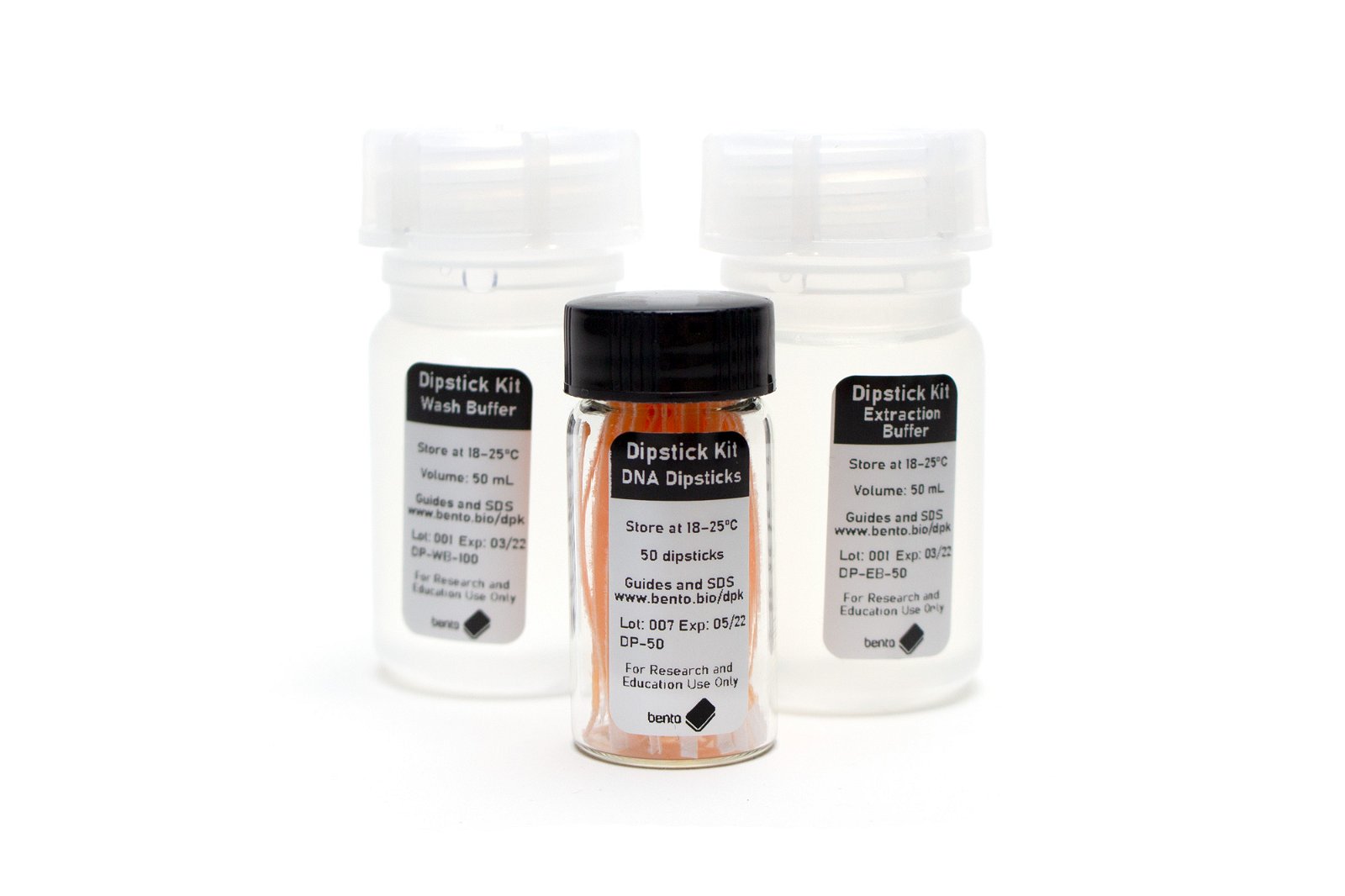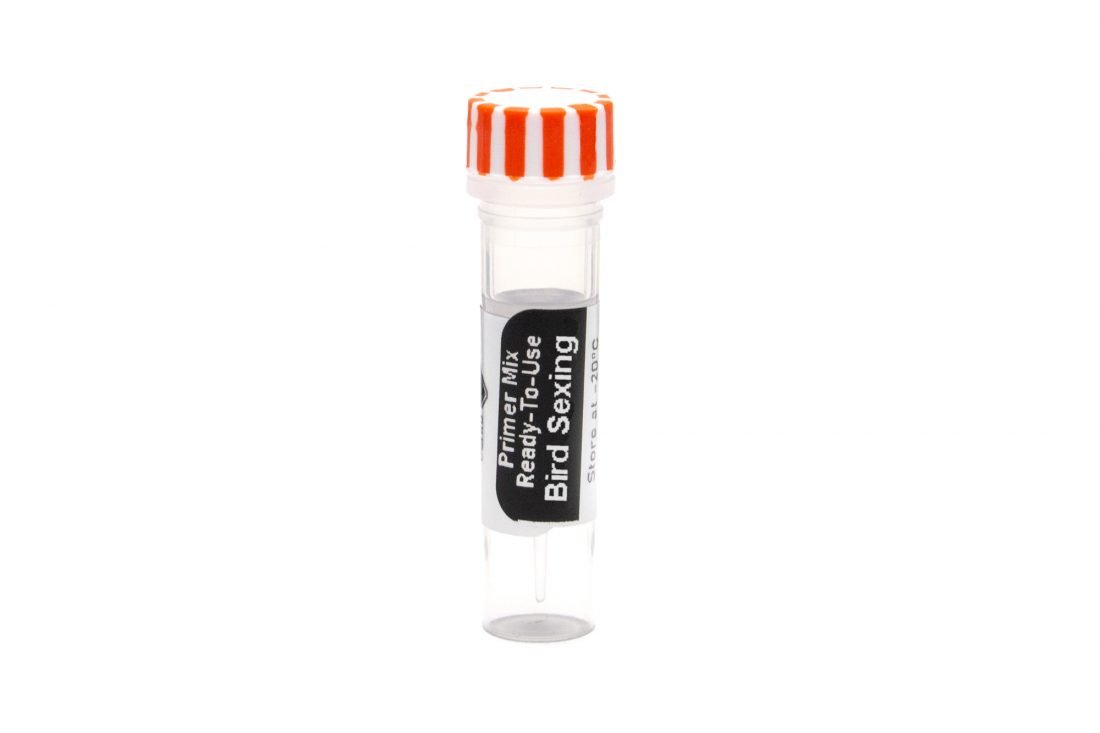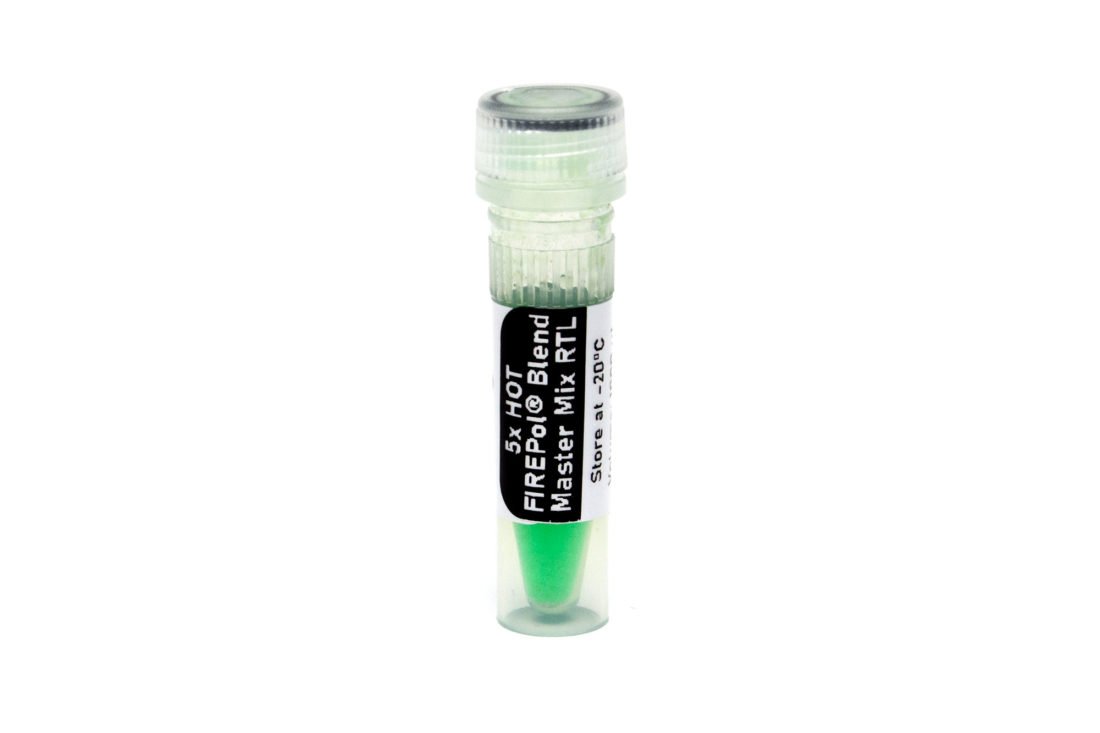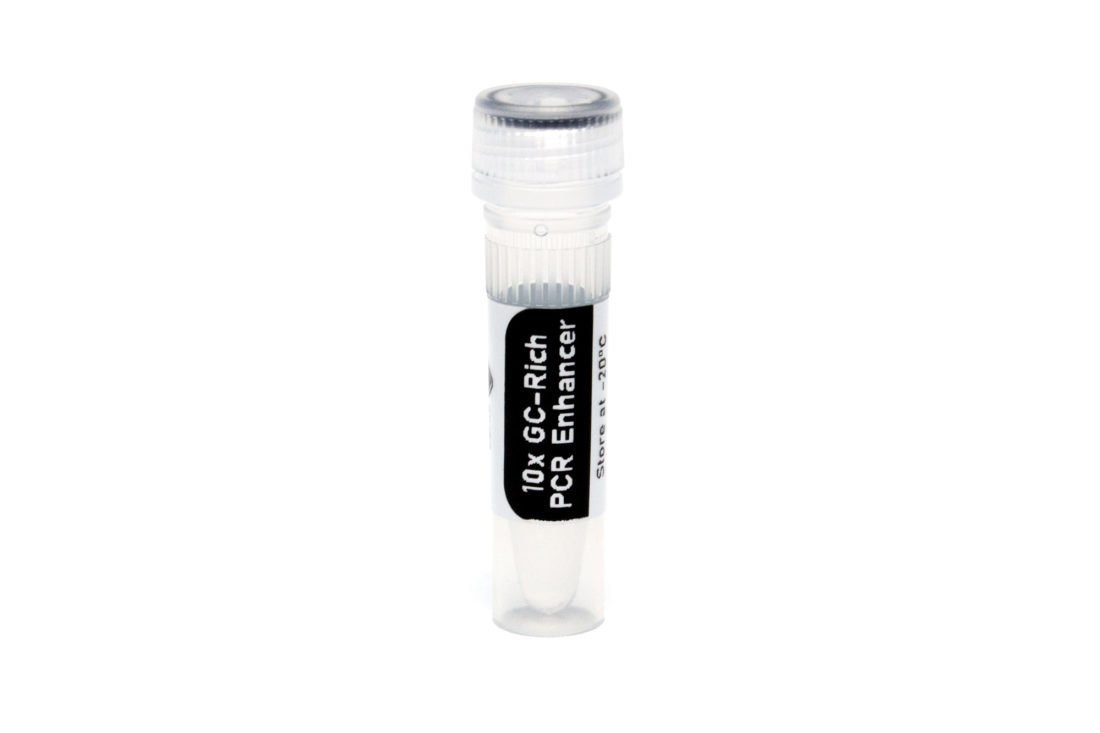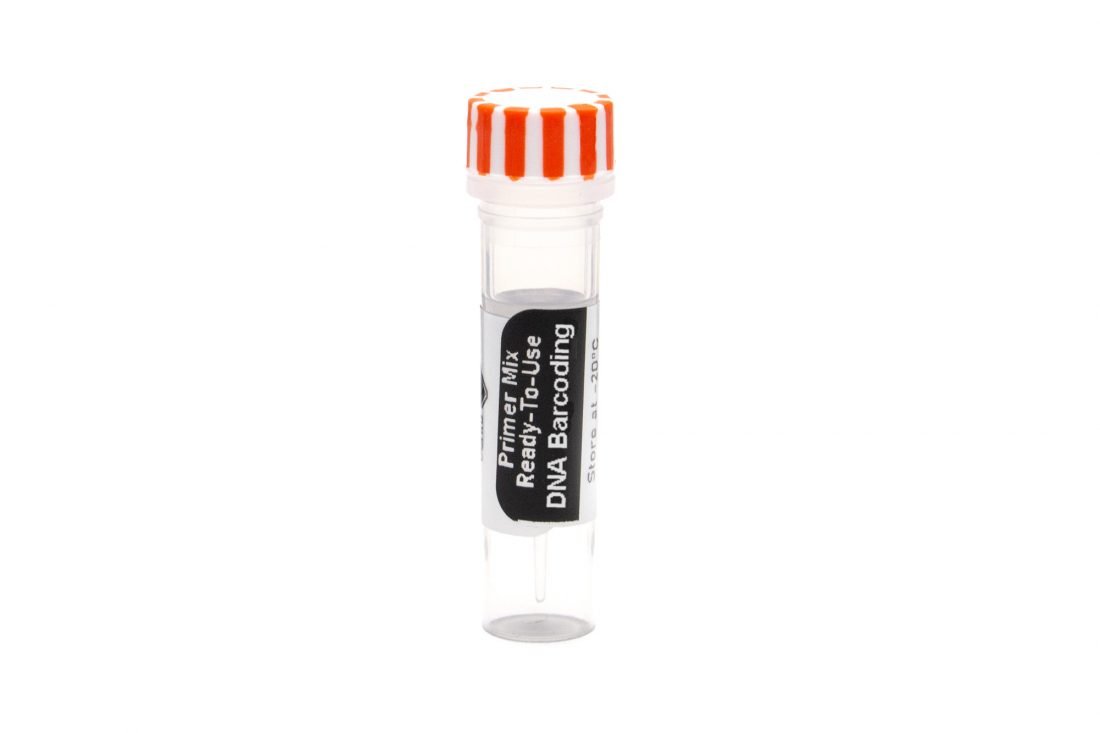Nucleic acid purification for use with PCR, quantitative real time PCR (qPCR), and isothermal DNA amplification methods such as loop-mediated DNA amplification (LAMP) and recombinase polymerase amplification (RPA).
Read here to find out more about whether the Dipstick DNA extraction method could suit your project needs.
Recommended Usage
Pipette 100 μL of Extraction Buffer into a 1.5 mL tube. Add 1-2 mm3 of a sample to the tube.
Grind the sample with a small plastic pestle, and dilute the sample with an additional 400 μL of Extraction Buffer. Dip a dipstick up and down 3 times into the extract, then dip 5 times into 1 mL of wash buffer. Discard the wash buffer. Keep the dipstick to release the DNA in the following steps.
Dip the dipstick into 20–50 µl PCR reaction mix 3–15 times (~10 s total) to release the DNA.
Alternatively to store the DNA sample, dip the dipstick into a tube of TE buffer. If necessary, molecular grade water can also be used for storage.
Limitations
Cell lysis using this method uses grinding to rupture tissue. If a sample can’t be easily ground with a plastic micropestle then cell lysis and DNA release will not be effective.
The dipstick purification method produces a low yield of extracted DNA and does not significantly concentrate it, unlike exhaustive DNA extraction using enzymes or toxic chemicals and solid-phase nucleic acid extraction purification methods. This means the method is best suited to PCR-based applications, and is not suitable for methods such as restriction enzyme digests or clean-up of PCR amplicons.
Due to the small capture volume of the dipstick, this method is unsuitable for purifying large quantities of nucleic acids, which means it is not suited to methods such as genome sequencing that require larger quantities of DNA.
For multiple PCRs from the same sample a new dipstick will be required for each PCR.
Troubleshooting
PCR inhibition caused by using too much material is the most commonly encountered cause of failure using this technique, followed by using insufficient material (or materials containing degraded DNA).
If PCRs fail it is useful to test a range of different ratios of Extraction Buffer per unit mass of sample material, ensuring that the sample can be fully ground in each cases. This can be done from initial failed extracts by subsequently diluting the crude extracts in Extraction Buffer.
Modifications
For extremely small samples (those visible as a speck to the naked eye, or even invisible without magnification), as little as 50 µL of Extraction Buffer can be used to improve maceration and avoid excessive dilution of the crude extract. Samples could also be crushed in Extraction Buffer between two microscope slides and the liquid pipetted into a tube or onto a dipstick.
For larger samples, or those with anticipated degraded DNA or high levels of PCR inhibitors, an increased amount of Extraction Buffer can also be used to improve success.
Additional dipsticks can be used to extract, wash, and transfer more DNA from the crude extract to the PCR mix. However, each additional dipstick may dilute the PCR mix slightly due to Wash Buffer carryover, and the PCR mix may need to be adjusted accordingly.
DNA present on dipsticks can be released into a TE storage buffer (after the wash step) to create a DNA template stock for multiple PCRs. Using multiple dipsticks for this purpose (or a larger fragment of filter paper held with tweezers) may be necessary to build up higher concentrations of DNA.
Components
Extraction Buffer (20 mM Tris-HCl, 25 mM NaCl, 2.5 mM EDTA, 0.05% SDS, 2% PVP-40, pH 8)
Wash Buffer (10 mM Tris-HCl, pH 8)
DNA Dipsticks (filter paper, wax)
Storage & Stability
Unopened: Store at room temperature (18–25 °C) for up to 1 year.
Opened: Store at room temperature (18–25 °C) for up to 1 year. The Extraction Buffer and Wash Buffer can also be refrigerated (~4 ºC) or frozen (–20 ºC) to reduce the chance of microbial contamination or for longer-term storage. If the Extraction Buffer is chilled or frozen it should be warmed in a container of very hot water to re-dissolve any precipitated detergent.
Shipping conditions
Shipped at room temperature.
